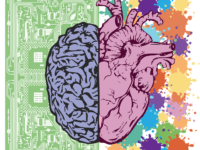Heartbreak often brings to mind cartoon hearts dramatically shattering into pieces Looney-Tunes-style, or eating a giant tub of ice cream and crying over romantic comedies. In reality, though, according to the American Heart Association (AHA), there is such a thing as a literal broken heart, which raises the question — is it actually possible to die of a broken heart?
Broken heart syndrome is a condition that sets in after an extreme emotional or physical stressor. Such stressors are diverse — a serious illness, the unexpected loss of a loved one, financial loss, a sudden drop in blood pressure — including even positive shocks such as a surprise party or winning the lottery. Broken heart syndrome involves the ballooning of the midsection and lower part of the left ventricle (known as the apex). Interestingly, during systole (contraction), the bulging ventricle looks like a tako-tsubo (a round-bottom, narrow-necked ceramic pot used by Japanese fishermen to trap octopuses), which is why in 1990, a Japanese physician coined the term takotsubo cardiomyopathy for the condition. However, since the left ventricle is the chamber responsible for pumping oxygenated blood throughout the entire body, such dysfunction can lead to poor circulation and severe, short-term muscle failure.
Although experts aren’t sure of the exact cause, the prevailing theory is that surging stress hormones, such as adrenaline, are able to “stun” or freeze the heart.
But why would stressful events lead to heart abnormalities? It’s no secret that after adverse experiences, the likelihood of anxiety disorders and depression is much higher — one of many established ties between mental health and heart health. One study presented at the AHA Science Convention clearly shows this. Involving 78 volunteers who had recently lost a spouse or child (and who also scored higher on anxiety and depression tests), the bereaved had an average of 75 beats per minute (five beats more than the controls) and double the episodes of tachycardia (rapid heartbeats) within two weeks of the tragedy. Although experts aren’t sure of the exact cause, the prevailing theory is that surging stress hormones, such as adrenaline, are able to “stun” or freeze the heart, which could cause changes in either heart muscle cells, coronary blood vessels, or both that prevent normal contraction of the left ventricle. In rare cases, certain drugs can be the cause of the stress hormone surges that induce broken heart syndrome, including epinephrine (used to treat severe allergic reactions and asthma attacks), duloxetine (a depression treatment, or a medication administered to treat nerve problems in people suffering from diabetes), levothyroxine (a drug given to people who have thyroid gland problems), and stimulants such as methamphetamine or cocaine. Another possible cause is a difference in the heart muscle structure itself.
Broken heart syndrome is frequently misdiagnosed as a heart attack, and for good reason — the two primary symptoms, chest pain (angina) and shortness of breath, are shared by both. In order to determine which one of the two it is, clinicians will do a coronary angiography, a test that uses dye injection directly to heart vessels and special X-rays. This will determine whether there are blockages in the coronary arteries, the most common cause of a heart attack. They might also use an echocardiogram (an ultrasound image) or another imaging technique that would show abnormal movements in the walls of the left ventricle.
As to how it’s treated, there’s no real answer to this — it all depends on the severity, and if the person has other conditions such as low blood pressure or fluid in the lungs. Generally, heart failure medications — such as beta blockers, angiotensin-converting enzyme inhibitors, and diuretics — are used and sometimes aspirin for patients with atherosclerosis, or plaque buildup in the arterial walls. To prevent recurrence (which is rare), beta blockers may be continued for extended periods of time in order to reduce the effects of stress hormones, although this has not been widely studied.
There is some silver lining to all of this, though. Broken heart syndrome is very treatable, and, remarkably, the ventricle returns to normal within weeks, with no lasting heart damage.
There is some silver lining to all of this, though. Broken heart syndrome is very treatable, and, remarkably, the ventricle returns to normal within weeks, with no lasting heart damage. Although there can be complications such as arrhythmias (abnormal heart rates), obstruction of blood flow from the left ventricle, and rupture of the ventricle wall, they are very rare — and the possibility of death even slimmer.
Image source: Pixabay






